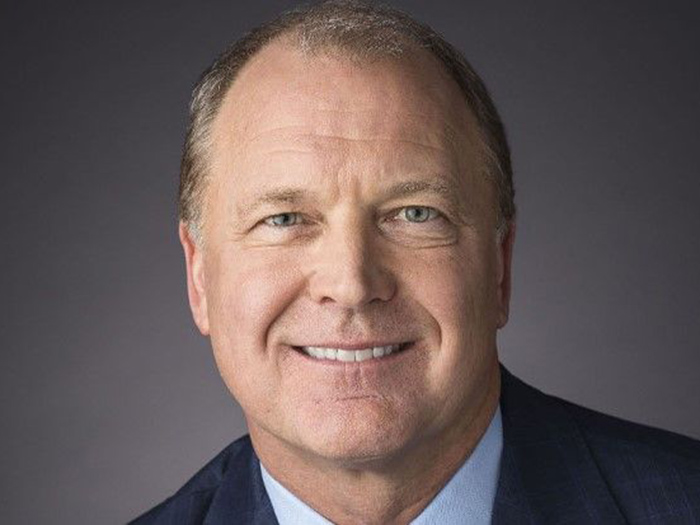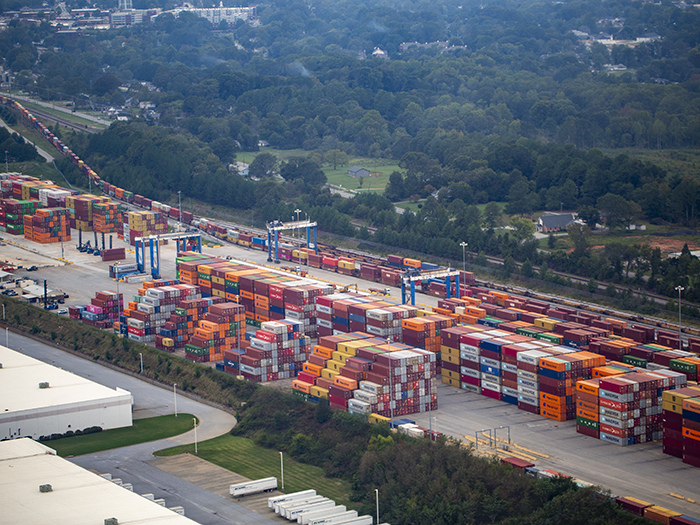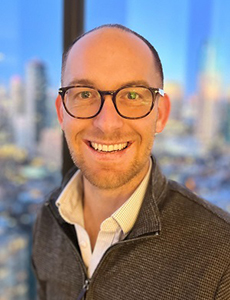Navigating Through Unprecedented Property Insurance Trends

Risk & Insurance had the opportunity to sit down at this year’s RISKWORLD conference with Bret Ahnell, the chief operating officer of FM Global, to discuss the current state of the property insurance industry, the impact of climate change, and how the insurer is supporting the transition to renewable energy.
What follows is a transcript of that conversation, edited for length and clarity.
Risk & Insurance: How would you characterize the property insurance industry trends in recent years and what do you see emerging in the coming years?
Bret Ahnell: The property insurance industry has been grappling with an unprecedented six-year hard market, which is unusual as hard markets typically last only 1.5 to 2 years before stabilizing. Several factors have contributed to this prolonged challenge, including the reinsurance community’s increased involvement, the impact of COVID-19, and the need to adapt to new ways of working.
Climate change has also introduced complexities, with severe convective storms prompting reinsurers to push more of that onto direct markets. This has led to capacity constrictions, with programs that previously had 10 participants now requiring up to 20 to fill out.
Looking ahead, the industry is exploring how AI can be leveraged to improve efficiency, effectiveness, and client relationships. Additionally, the industry is experiencing a generational shift, with many young professionals entering the workforce. This has raised questions about remote work policies and the importance of mentorship and learning from experienced colleagues.
At FM Global, we’ve decided that outside of specific fully remote roles, such as tech and analytics, everyone is back in the office five days a week with flexibility. While it took some adjustment, this has allowed us to focus on core business discussions rather than constantly debating work arrangements.
Overall, the property insurance industry is facing a dynamic landscape with new challenges consistently emerging, requiring adaptability and innovation beyond the traditional blocking and tackling approach.
R&I: How is FM Global approaching the challenge of climate change, particularly in relation to your focus on expanding renewable energy coverage?
BA: Climate change is driving the transition to renewable energy, but it’s a bit of a chicken and egg situation. As an insurer, we recognize the importance of supporting the growth of the renewable energy sector to combat climate change.
However, renewable energy projects also come with their own set of risks that need to be carefully assessed and managed. At FM Global, we are expanding our focus on renewable energy to help facilitate this transition while ensuring the long-term sustainability and resilience of these projects.
By offering comprehensive coverage and risk management solutions tailored to the unique needs of the renewable energy sector, we aim to support the growth of this industry and contribute to the global effort to mitigate the impacts of climate change.
R&I: What changes are we seeing in the renewable energy space, and what opportunities do you see for implementing infrastructure?
BA: Many companies, particularly power generation organizations, are transitioning from fossil fuels to renewables due to factors like water regulation, sustainability, and ESG. About 50% of our clients in the power generation industry, which accounts for just under $1 billion of our revenue, are investing in or transitioning some portion of their portfolio into renewables.
This transition brings challenges, such as equipment breakdown problems associated with new technology. Additionally, renewable energy sources face unique exposures, like hail damage to solar panels, lightning-induced fires in wind turbines, and fire risks in battery storage.
We’ve entered this space to support our clients as they transition. However, it has not been as profitable an area for the industry due to losses from mechanical breakdowns and the exposures these systems face. Our approach is to lean on our engineering-first business model, working with equipment manufacturers to make the equipment more fit-for-purpose and resilient to the exposures they face.
We’ve established a brand new dedicated renewables group in the United States, offering a tailored policy that addresses the specific coverages needed based on the exposures renewable energy systems face. With dedicated experts and significant capacity, we aim to capitalize on growth opportunities while prioritizing support for our existing clients as they transition.
R&I: What can you tell me about the industry’s current talent pipeline, and how does FM’s grant to the Spencer Educational Foundation fit into the bigger picture of passing the torch?
BA: At FM Global, we hire many people as field engineers, and from there, they move into other roles within the organization. However, we’ve found ourselves with a gap between the baby boomer generation and younger employees, leading us to accelerate people into new roles due to our practice of hiring from within.
This has resulted in people doing jobs without the necessary experience. We always hire people with the sense that they should come to FM Global for a career, not just a job.
R&I: What’s the nightmare scenario for the insurance industry? Where are we underprepared and what keeps you up at night?
BA: The nightmare scenario that keeps me up at night is probably a large-scale tornado event. At FM Global, we provide very high limits, but we don’t specifically underwrite or engineer for tornadoes.
Another concern is the potential for coverage gaps that could be exploited by adventurous lawyers, leading to huge aggregation events. However, I believe that aside from tornadoes, we can engineer and implement loss prevention measures for most exposures worldwide. With the right precautions in place, an event could be a minor distraction rather than a major disaster.
Tornadoes are particularly worrisome because they are unpredictable and occurring more frequently. Given the high limits we provide, a tornado could potentially run through our treaties. Other companies might manage this risk differently by offering smaller limits, but for FM Global, it’s a significant concern for our industry.
R&I: What are some success stories in the insurance industry that haven’t received the attention they deserve, and what lessons can be learned from them?
BA: From a social perspective, the insurance industry is incredibly important to preserving the sustainability of life in general. When something bad happens, the insurance industry is there, proving its resilience time and time again.
There’s never been a question of whether someone will be left empty-handed; there’s plenty of capital to cover things. The industry has been responsible, even as new exposures, such as cyber risks and potential issues arising from AI, continue to emerge.
The industry needs to continue examining these challenges. Just like with climate-related exposures, such as flood, hail, and tornado, the industry cannot run from these issues. Instead, it needs to confront them head-on and find solutions rather than trying to circumvent them.
While some may argue that the industry isn’t doing enough in areas like cyber, generally speaking, the industry has been there when needed. In any major event, coverage has been available, and the industry has helped put things back in place, keeping things moving for companies and individuals alike. From a social perspective, the insurance industry is a necessity for human life as we know it.
R&I: Is there anything else you’d like to share with our readers that we haven’t covered?
BA: I want to emphasize that our success is a direct reflection of what our clients have done. Over the last year, our clients completed almost nearly $1 trillion in loss expectancy reduction. Our results, which have been better than the rest of the industry, are a testament to our client base and the investments they’re making in risk mitigation.
In the insurance industry, there’s luck we make and luck we take. We all benefit when the market has tailwinds, and sometimes we’re just fortunate to miss the harm when Mother Nature strikes. But the luck we make comes from the work our clients put into risk improvement, and that’s the defining difference for us.
Because of this, we’re now able to give back to our clients with our largest membership credit ever at $1.4 billion. Over the last nine quarters, we’ll have returned 80% of our underwriting profits. As a mutual company, when we have extraordinary years and perform better than expected, we’re in a position to return that back to our policyholders.
Resilience comes at a cost, but it’s worth the investment. I want to give a shout out to our client base because risk improvement works. &










